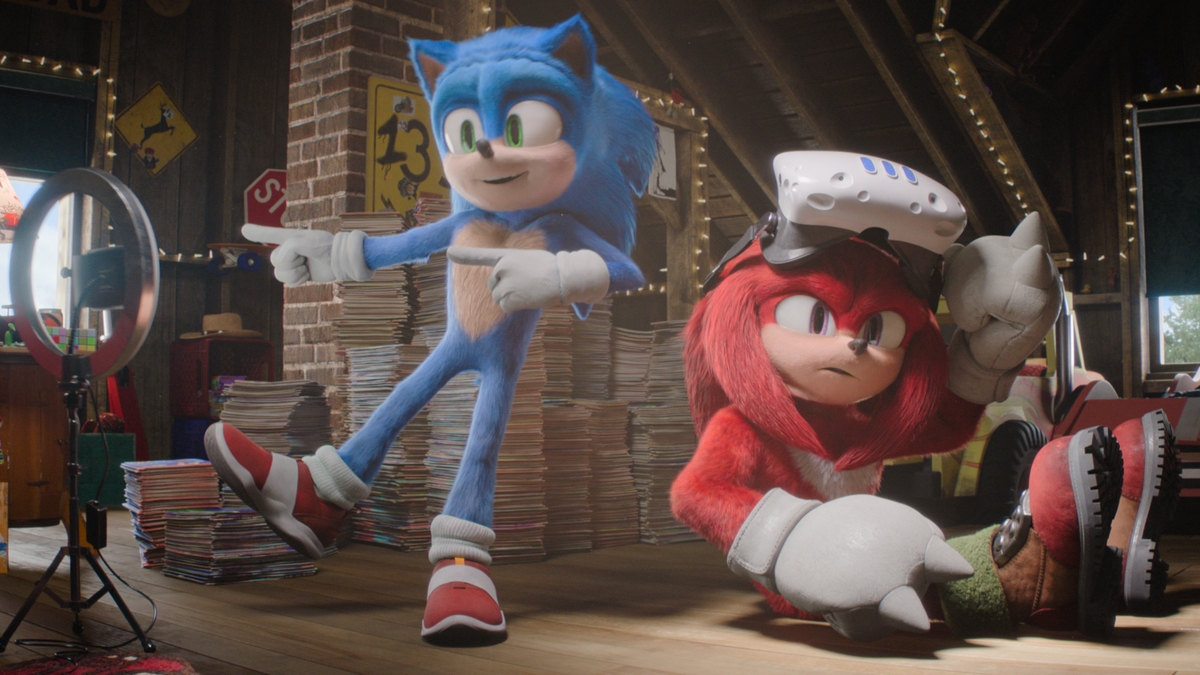You know that sort of award bait where a loveable (usually non-human) character dies in a naked attempt to pull on the audience’s heartstrings? And you know how cynical viewers usually dismiss it as cheap psychological manipulation, but occasionally a work will emerge that’s so well-formed that it manages to evoke powerful emotions regardless? The Outlast games are basically that phenomenon taken to the darkest possible extreme. They’re so relentlessly crass and horrific, predatory of some of the easiest universal fears, that they should just roll off my back as unintentional parody. Instead, they freak me the hell out. Both games now share the distinction of being the only titles to make me legitimately jump in fright (usually I just inhale sharply and recoil from the screen), and while that alone doesn’t make Outlast 2 a great game, it certainly warrants a recommendation for horror fans.
Even ignoring the straight-faced cliché of it all, the first game was still noticeably flawed. It simply didn’t have a selling point beyond its iconic night vision aesthetic and unspeakable horror. It also had a terrible habit of dropping the player in a small area with a puzzle and a homicidal psychopath, expecting them to solve one while avoiding the other, often repeatedly. That kind of situation is still present, but the unfair design has been cleaned up significantly, creating a more streamlined, sophisticated experience akin to Amnesia: A Machine for Pigs relative to The Dark Descent. Except in this case, the original’s brand of horror has been preserved and amplified with the addition of a psychological component.
Said component is mostly concerned with paranoia over whether your body is going to remain intact over the next ten seconds, which is once again the most basic form of psychological horror, but executing it this well takes a special talent. “Horror that takes advantage of human psychology” is too weak a definition. The things this game does to human psychology would be illegal in most jurisdictions. The overwhelming sound design will frequently have players cowering in seemingly safe spaces from gameplay threats that may or may not actually exist, but it’s the deliberately paced scripted sequences that really get under the skin. The only game I can think of that made me doubt my understanding of my own surroundings to such a degree is Antichamber, and it was working with a license to disobey all laws of physics.

At first, these two elements are confined to designated locations in the plot. The primary setting, where journalist couple Blake and Lynn Langermann have crash-landed in an Arizona village of violent cultists houses most of the fear of being murdered, while occasional flashbacks to an incident at the pair’s old Catholic school contain most of the uncertain dread. Shifts to these relatively still and pristine classrooms and hallways are a crucial piece of the game’s presentation. They provide an unnerving contrast during the plot’s first half and assemble a provocative and disturbing climax during the second. You see, the two halves never directly connect as you’d think. Instead, through increasingly blurred transitions and unspoken parallels and symbolism, players are forced to ask which event the game is actually about, both for them and for the protagonist.
Not that the importance of the initial premise should be downplayed. In fact, it’s kind of interesting that between this Canadian production and the Japanese Resident Evil 7, the two biggest horror releases in years have been sequels that abandon their established settings in favour of a “rednecks hunt outsiders” story. It’s almost as if the last few years have increased international disdain for xenophobic rural America. In all seriousness though, there isn’t much to read into about the antagonists. The cult’s modus operandi seems to be consensual sex followed by forced abortion, while a smaller splinter faction prefers forced sex followed by forced lack of abortion. The usual term for this sort of thing is “cartoonishly evil,” although that vastly understates how gruesome events become in this game.
It seems as though Red Barrels noticed that the amount of visible penis in the first game had become an unusually large deal among fans, and decided to one-up themselves by including as much sexual violence, both implied and graphic, as they could get away with here. Despite the sense that the game is trying too hard to push boundaries (e.g. the infamous death animation where Blake is castrated with a sharpened cross), I genuinely consider Outlast 2 an artistic achievement. Blake’s character arc is surprisingly complex, especially in contrast to the glorified target practice that Miles Upshur was. Furthermore, the soundtrack is spectacularly cacophonic, always magnifying the tension and chaos of a given scene while incorporating a sonic variety you usually can’t find in a single game. And of course, the visuals portray the grotesque in the most gorgeous possible way.

It’s solid from a technical standpoint, too, with straightforward controls and generally believable AI. Most cultist encounters are slightly open-ended and incorporate new stealth tools such as a long-range microphone and the ability to hide in plant life and shallow water, alleviating much of the original’s problems with rigidity. They’re not so open-ended that they become unfocused, however, as the level design is usually very good at directing you to your goal with a subtle path or well-placed light source. Despite the comparisons to RE7, the gameplay frequently evokes memories of RE4, as later areas include a dilapidated mine and a lake that’s obviously unfit for swimming. And of course, there’s also the very real possibility of barricading yourself inside a building, only to have an enemy climb through a window and stab your eyes out.
I’ve been using a lot of qualifiers whenever I praise the gameplay, because it’s still decidedly imperfect. Horror games require a specific kind of challenge that feels difficult without actually being it, because actual challenge leads to repetition, which quickly replaces fear with annoyance. Outlast 2 usually understands this, but it stumbles during encounters with recurring opponents, especially Marta, the wielder of that aforementioned sharpened cross, and another that shoots flaming arrows. These two often seem to completely ignore the rules that govern everyone else, resulting in scenes that can only be resolved with brute force or exploitation of AI quirks. The worst part is that Marta is the first enemy to confront the player, giving the product a terrible first impression.
Horror games are especially difficult to design, and not just because fear is a subjective response. There’s an enormous overlap between what can make a game scary and what can make it frustrating, but Outlast 2 does a great job of exploiting the former while avoiding the latter, albeit not completely. Apart from its twisted narrative, it’s not very interested in expanding the series’ horizons, but the gameplay refinements it offers within those horizons and that narrative’s arresting presentation will make it an easy contender for “scariest game ever” for years to come.
This review is based on the PC version, which we were provided with.






